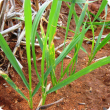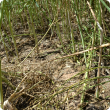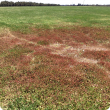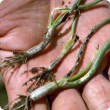Services
Search in Services
Filter services by topic
- (-) Remove Crop diseases filter Crop diseases
- Pests, weeds & diseases (11) Apply Pests, weeds & diseases filter
- Diseases (11) Apply Diseases filter
- Crops (10) Apply Crops filter
- Grains (8) Apply Grains filter
- Grains research & development (7) Apply Grains research & development filter
- Fungi (7) Apply Fungi filter
- Control methods (5) Apply Control methods filter
- Wheat (4) Apply Wheat filter
- Barley (4) Apply Barley filter
- Chemicals (4) Apply Chemicals filter
- Fungicides (3) Apply Fungicides filter
- Canola (3) Apply Canola filter
- Horticulture (2) Apply Horticulture filter
- Oats (2) Apply Oats filter
- Pulses (1) Apply Pulses filter
- Plant biosecurity (1) Apply Plant biosecurity filter
- Pastures (1) Apply Pastures filter
- Pasture management (1) Apply Pasture management filter
- Soil acidity (1) Apply Soil acidity filter
- Soils (1) Apply Soils filter
- Weeds (1) Apply Weeds filter
- Viruses & virus-like (1) Apply Viruses & virus-like filter
- Vegetables (1) Apply Vegetables filter
- Onions (1) Apply Onions filter
- Soil nutrients (1) Apply Soil nutrients filter
- Crop weeds (1) Apply Crop weeds filter
- Fruit (1) Apply Fruit filter
- Climate, land & water (1) Apply Climate, land & water filter
- Biosecurity & quarantine (1) Apply Biosecurity & quarantine filter
- Biosecurity (1) Apply Biosecurity filter
- Lupins (1) Apply Lupins filter
- Managing soils (1) Apply Managing soils filter
- New horticulture crops (1) Apply New horticulture crops filter
- Minor fruits (1) Apply Minor fruits filter
- Mechanical, physical and cultural (1) Apply Mechanical, physical and cultural filter
- Olives (1) Apply Olives filter






